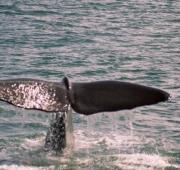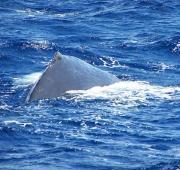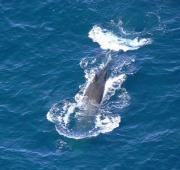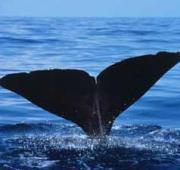 The sperm whale is one of the world's water giants and is found in ocean waters worldwide. Although historically known as the common cachalot, the sperm whale gets it's name from the waxy-liquid substance found in it's head, that is used in candles, soap and cosmetics by humans.
The sperm whale is one of the world's water giants and is found in ocean waters worldwide. Although historically known as the common cachalot, the sperm whale gets it's name from the waxy-liquid substance found in it's head, that is used in candles, soap and cosmetics by humans. The sperm whale was once found in large groups, known as pods, around the world but extensive whaling of the sperm whale has led to it being classified as a vulnerable species today. The sperm whale is most commonly found in the deep ocean, where there is an abundance of food and along continental shelves.
The sperm whale was once found in large groups, known as pods, around the world but extensive whaling of the sperm whale has led to it being classified as a vulnerable species today. The sperm whale is most commonly found in the deep ocean, where there is an abundance of food and along continental shelves.


The sperm whale is one of the ocean's largest and most dominant predators, feeding primarily on medium sized squid. The sperm whale is also known to hunt larger squid species including the colossal and giant squids, and also octopus and large fish.
The sheer size of the adult sperm whale means that it has no real natural predators in the ocean, besides being over-hunted by humans. The smaller sperm whale calves however have been known to be taken by killer whales and occasionally large sharks.
After a gestation period that lasts anywhere from a year to a year and a half, the female sperm whale gives birth to a single sperm whale calf into the surrounding water. Calves are thought to suckle (feed on their mother's milk) for up a few years before they begin hunting for themselves. Female sperm whales are able to breed when they are around 10 years old and can live to be beyond the age of 70.
Today, due to centuries of hunting, the sperm whale population is thought to be under threat in the wild. Although the sperm whale population is said to be stronger than that of other whale species, sperm whales are also now under threat from other factors including noise and chemical pollution in the water.

